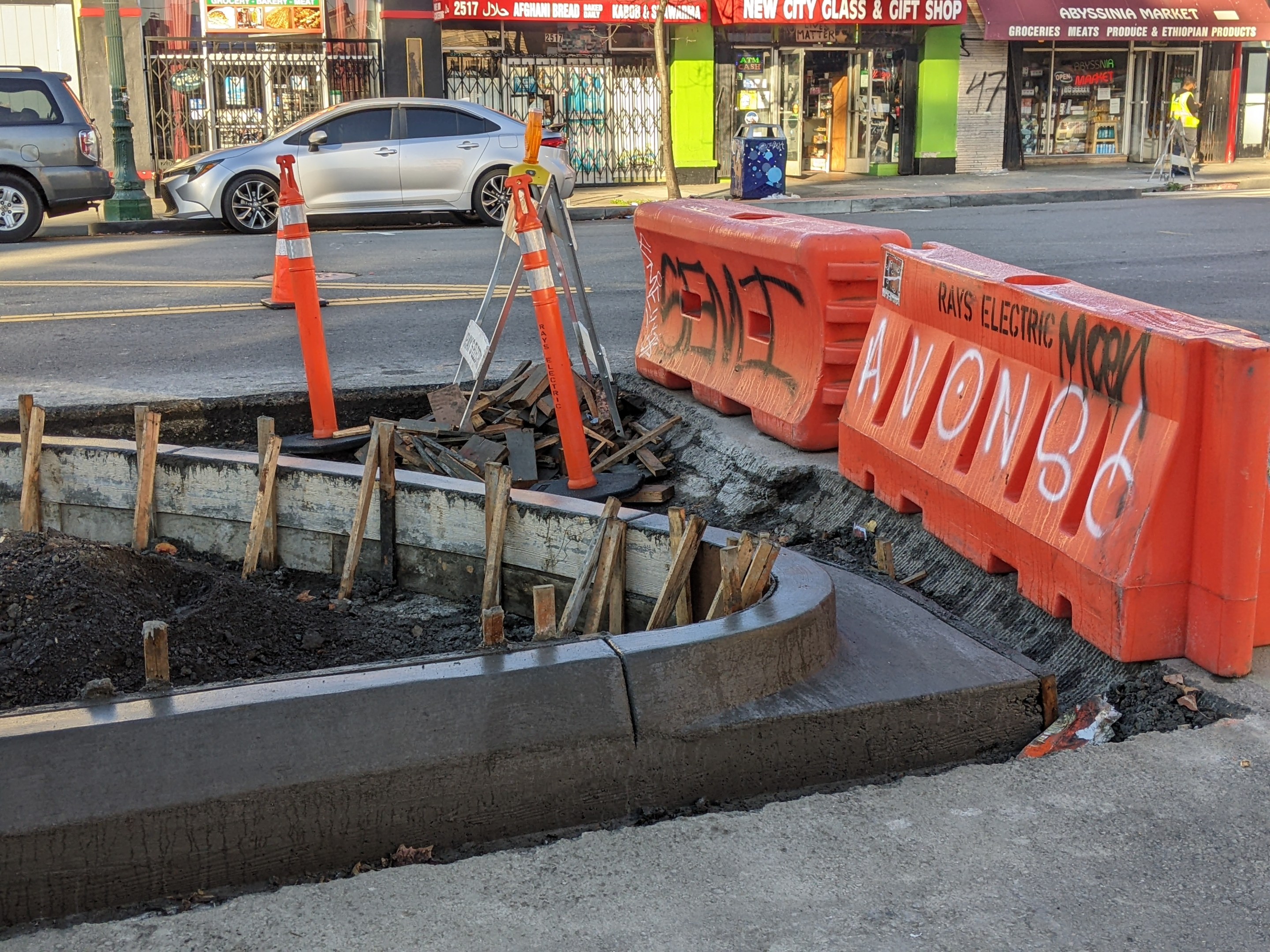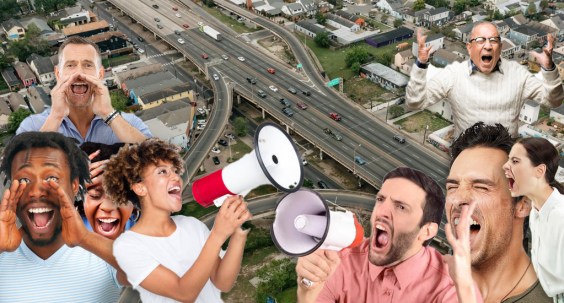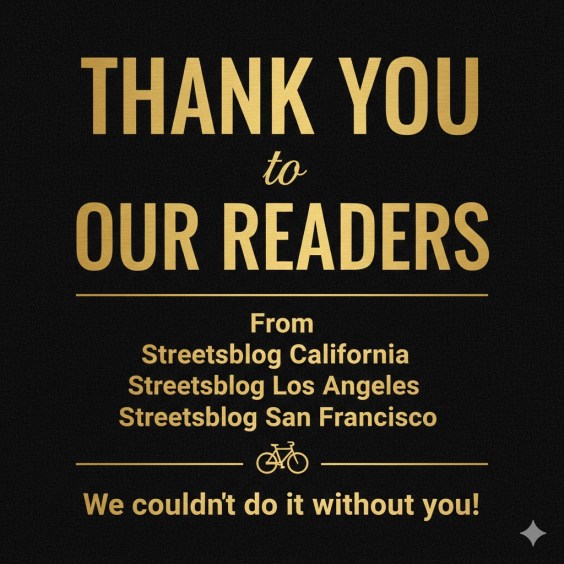I biked to the open house Tuesday at the Temescal Library for the project to extend Telegraph's protected bike lanes north of 52nd Street.
"I can't let you bring that bike in here," said the security guard at the front door. He pointed me towards a couple of outdoor bike racks overflowing with bikes.
"I can't bring my bike into an open house for a bike lane?"
Anyway, I turned around and went home. Apologies to readers, but Oakland PD's inability to stop thieves dictates that I'm not going to lock my bike outside just to find it gone or stripped of parts, even if I have to change up the occasional Streetsblog post.
If you think I'm being extreme, let me tell you about an experience from the prior week, when I was running an errand in downtown Oakland. I noticed a huge Ford SUV with illegally tinted windows and no license plate running red lights on Broadway like they weren't even there. And they did it right in front of a police car.
I encountered the SUV a second time a few minutes later, maybe 50 feet from police headquarters on Washington. It was stopped in the middle of the street and a couple of skinny guys in black balaclavas were pulling stuff out of a parked car through a smashed window. They jumped back into the SUV with their loot and drove off. I went to the police station, which has no windows and no apparent entrance, to try and tell them that, you know, there's a criminal gang operating under their proverbial noses. It's the same police station, by the way, in front of which one can always find cars (including police cars) parked illegally, in red zones, on bike lanes, etc. I circled the entire building before I found an intercom and pushed the button. Someone asked what I wanted. I explained and he started to give me a phone number to call. I interrupted. "Nope, not calling anyone. I did my duty. Now do yours or don't, but I'm done."
Anyway, I thought about that earlier absurdity as I rode home from the Temescal library. Naturally, I took Telegraph, using the parking-protected bike lanes in Temescal and the concrete-protected bike lanes in the KONO district. There was a blackout in the KONO district so it was pitch dark and traffic lights weren't working. But I felt safe on the protected lanes, even in the darkness. The protected intersections worked as they should and people had time to navigate past one another. The only time I didn't feel safe riding my bike was on the stretch between the KONO and Temescal and the last section before it merges with Broadway, where the street has conventional door-zone lanes. There I had to navigate into traffic to go around illegally parked cars five times. Those were also the only parts where a drunk, stoned, or otherwise reckless driver could have swerved into the bike lane and mashed me with impunity at any second, despite my reflective clothing and a small fortune in lights.
My takeaway: I'm convinced there's a connection between the utter lack of enforcement — of red lights, parking in bike lanes — and illegal and dangerous car modifications, and crime generally. The same goes for motorists who speed, text-and-drive, etc. with impunity. There's a through-line that leads right to people busting into cars and the rest of Oakland's crime wave. Put another way, not everybody who drives or parks in a bike lane or fails to use a turn signal also breaks into cars or robs 7-Elevens, but I guarantee there's never been a professional criminal who fretted about running a red light or blocking a bike lane, crosswalk or sidewalk.
There's something truly destructive and insipid in sending a message to potential bad guys that "anything goes" when it comes to drivers and traffic laws. Maybe if police stayed involved in traffic enforcement and were motivated to take it seriously and administer it without bias, we'd reduce crime across the board. Case in point: if the police had bothered to stop that SUV for running red lights, they probably never would have had a chance to break into cars.
I'm not talking about creating criminal records for kids shoplifting a candy bar or homeless people breaking camping laws. I wouldn't want to see cities return to the excesses of the "broken windows" policing of the 1990s. But when we're talking about people breaking laws that endanger people's lives and doing so brazenly in front of the police, something has got to change. I know there are many factors when it comes to crime and enforcement, but it doesn't feel like a coincidence that countries that take Vision Zero seriously (including the enforcement part) also have much lower crime rates across the board.
I got home from my aborted trip to the OakDOT open house and, in case the week hasn't been surreal enough, there was yet another crew of masked miscreants parked in front of my building, smashing and grabbing from parked cars. I thought about calling 911, but really, what's the God-damn point?
I do know this: it's always better to use concrete, not paint, for bike lanes. Paint requires enforcement to work — and that clearly doesn't work. Concrete enforces itself, firmly and evenly; it doesn't discriminate, it doesn't take breaks, it doesn't sleep. It also has zero tolerance for drivers who speed, don't pay attention, or otherwise put people in danger. Concrete keeps everybody on the street safer.
It follows that if you want to stop a crime wave, you need law enforcement that exhibits concrete-like firmness, consistency, and absolutism when it comes to intervening to stop dangerous behaviors. Yes, police officers should be banned from doing pretextual stops of motorists. That's just unacceptable. But the answer isn't no traffic enforcement — it doesn't matter if it's police or DOT traffic officers, they need to stop everyone who drives in a way that puts others at risk!
It's the ultimate irony, but right-wing, supposedly law-and-order folks always object when the subject turns to speed cameras, red-light cameras, cops issuing expensive citations for texting and driving, or revoking someone's license for driving dangerously. But enforcing traffic laws and protecting vulnerable road users isn't just a way to save lives directly; it's an attitude about how we want our society to be. In fact, it's not really about protecting "vulnerable road users," it's about protecting vulnerable people no matter where they are or how they get around. Projects such as the concrete-protected bike lanes on Telegraph, with more to come, give me hope. Perhaps it's the first step in reducing crime across the board and making our cities safe on the streets, on the sidewalks, in the parks, at home, and everywhere for everyone in the city.
Note under "things I shouldn't have to say" but I guess I do: if you work at a DOT, and you're planning an open house for a bike lane project, set up a bike valet and/or check to make sure the venue lets bikes inside.






